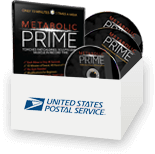Metabolic Law #1 (revealed in video):
Gets Your Metabolism Working FOR You, Instead of Fighting Against You...
Introducing Metabolic Prime:The Fastest Workout On Earth That’s
Designed To Restore Your Metabolism
To The Prime Of Your Life!

IMPORTANT: Secure Your Spot in the Prime Metabolic Transformation Challenge Before the January 2nd Deadline...
(Spaces Are Limited and May Already Be Gone, Check Below to See if Still Available)
- Just 15 Minutes, 3 Times a Week...
- “Micro-burst” Moves Are Only 45 Seconds...
- Shreds Fat and Sculpts Muscle for 48 Hours After...
- No Gym Needed, Can be Done Anywhere...
- Variations for Beginners or Those With Limitations...
- Advanced Options for Those Wanting “Hard Core”...
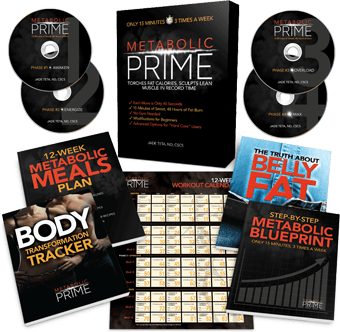
Metabolic Prime is not only the Fastest Workout On Earth… it’s the most flexible.
Designed with 4 Unique Phases For All Levels Of Fitness (beginner, intermediate & advanced), Metabolic Prime meets you RIGHT WHERE YOU ARE.
Here are just a few of the surprises that await you:
Surprisingly Short...
- You’re over and done in less than 15 minutes FLAT!
- Ideal for total beginners, intermediate folks, and even advanced-level fitness experts!
Stunningly Effective...
- Forget about doing cardio, resistance training, and stretching in three tedious workouts...get it all done in ONE super-short session!
- “Primes” your metabolism so it keeps doing the hard work for you...burning fat calories, hardening soft, saggy muscle for up to 48 HOURS after!
Speedy Results...
- Within DAYS, you’ll see and feel a difference in your body!
- Within no time, excess weight will come off, your muscle will take on that “sculpted” look, and your energy will surprise everyone around you. Expect
a lot of compliments!
Super Convenient...
- Do it anywhere you like: at home, at work, on vacation, at the park, in the gym… you name it!
- No cumbersome equipment needed!
Surprisingly Customized...
- Never force yourself through another grueling workout that drain your body’s energy reserves...Metabolic Prime automatically conforms to YOUR body and needs!
- You call the shots: REST when YOU want… for as LONG as you need! And then you get back into it ONLY when you’re ready...
Supremely Motivating...
- No one on God’s green earth can motivate you to move like I can...that’s a guarantee!
- Plus the speed of your results will keep you on the edge of your seat,
eagerly awaiting your next session!
Superior Variety...
- You’ll never repeat the same workout twice! There’s so much variety, you’ll feel like you're going on a new adventure every time!
- These workouts are a BLAST...many report they’re downright addictive!
Safety First...
- Most workouts are hard on your joints. They rely too much on high-impact movements to get what little results they do. Metabolic Prime actually
nurtures your joints and ligaments! - Designed with variations for anyone at any age, these workouts will not
only give you the results you desire...they’ll do it while ensuring your safety!
The 4-Phase Metabolic Progression Design:
It doesn’t matter if you’re a total workout newbie who hasn’t left the couch for so much as a trip to the fridge, or a seasoned athlete wanting to hone and tone your body like never before…
I have your back… and The Metabolic Prime 4-Phase Progression Protocol will keep you COMING BACK until you get the physique, energy, health, and youthful metabolism you deserve…
Each of our 4 Phases are designed to ease your body and metabolism back into its prime and systematically transform your metabolism from the ground-up, one
step at a time:
Phase 1: Awaken!
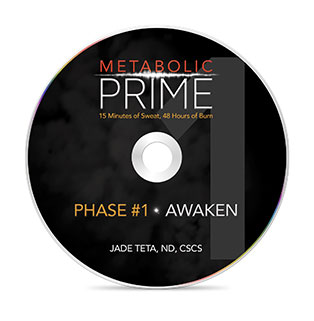
We’re about to pour some metabolic espresso into your veins and get your body ready for the transformation ahead!
Phase 1 is like downloading new metabolic software right into your body. The targeted moves in Phase 1 will re-activate your dormant metabolic hormones and flip them to the ON POSITION for as long as you desire.
The Phase 1 Secret: Your Nerve Nexus
In this phase you’ll re-teach your body how to fully-activate your muscles. And the more a muscle is activated, the more fat it burns for fuel!
How? Your nerves control your muscle… and the more muscle your nerves fire off, the more fat calories you burn.
THAT MEANS:
- Your body will be turned into a fat calorie-burning machine!
- You’ll improve strength, conditioning, and coordination all at once!
- You can start right now, no matter what shape you’re in!
We’ll retrain your nerve nexus to get your muscle fibers firing at peak capacity… and do it in just 45 seconds… turning your body into a calorie-using machine.
You’ll finally experience the fat-burning or rapid reshaping those other workouts promised you and never delivered!
Phase 2: Energize!
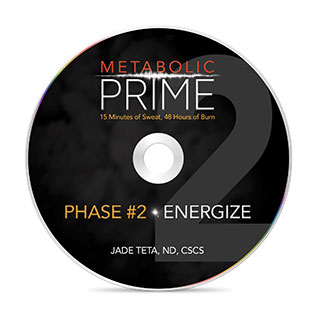
Now that your metabolic machine is ready, it’s time for some high-octane fuel from the one place that will make you the happiest: YOUR FAT CELLS.
Most folks are stuck using sugar and carbs for fuel… unable to access those ugly pockets of fat to burn as energy.
That’s a huge problem because you’re able to store only about 2,000 calories as sugar/carbs… but over 135,000 as fat!
In phase 2 that all changes as your metabolism learns to burn BOTH sugar and body fat for a TURBOCHARGED, BODY-SCULPTING EFFECT.
The Phase 2 Secret: Your Hybrid Fuel Source
You’ll discover how awesome it feels to have ENERGY ON TAP to do anything you want, anytime you want to. No longer will your body fat remain “stuck”... locked on your face, belly, hips, butt and thighs.
Instead, it will now be used as a virtually unlimited source of fuel.
- Your metabolism will be rewired to start burning your body fat and the carbs you eat in your diet as fuel!
- You never have to rely on “burning off” excess fat calories by working out for hours… your primed metabolism will take care of this FOR YOU!
- Your fat/sugar fuel super-combo means your energy is about to take off like a rocket as your body uses this hybrid fuel source to sculpt your muscle and shred your body fat!
Phase 3: Overload!

Did you know that you would burn off over 8 POUNDS of fat in 48 HOURS… if you exercised without stopping? Fortunately, you don’t have to!
Think of Phase 3 as the closest thing possible to
48 hours of continuous fat calorie-burning
POWER:
While you’re sleeping, watching TV, or just hanging
out with your friends and family, the The Aftershock
Effect generated by these super-efficient 15-minute
workouts will be generating even more energy, greater
lean muscle, and stripping off those pesky pounds FAST!
The Phase 3 Secret: Your Aftershock Autopilot
Right now your energy circuits are firing like they never have before. Even though you’ve long finished your last workout, The Aftershock Effect keeps your body and metabolism working out for you for up to 48 hours!
If your workout was a 6.3 on the Richter Scale, Aftershock will bump it to an 8.5 AUTOMATICALLY. Your body is now rejuvenating itself ON AUTOPILOT… and it feels like you’re progressing by the MINUTE!
THAT MEANS:
- Your progress is automatic…your metabolic hormones are charged up, and The Aftershock Effect is running the metabolic show!
- Your work is DONE in just 15 minutes, 3 days per week. For the next 48 hours, your body-sculpting is on AUTOPILOT… so you can relax and enjoy!
- For 2-3 days after your workout, you can see and feel your muscles firming and your body fat disappearing. Your ageless metabolism is now firmly in charge...and you are on CRUISE-CONTROL, BABY!
Phase 4: Max!

Now it’s time… it’s on, and your metabolism is about to reach max capacity.
Through the use of full-body hybrid moves designed to quickly accelerate metabolic hormone production, you are now burning fat and building lean muscle almost as if you were a teenage athlete.
Why? Because you’ve entered your MAX Metabolic Prime!
The Phase 4 Secret: Your Metabolic Takeover
Every Phase in Metabolic Prime releases fat-burning, youth-enhancing, metabolism-revving hormones into your system so they can do the hard work for you. However, in Phase 4, this is MAX METABOLIC TAKEOVER!
We’ll FLOOD your body with as many of these amazing metabolic hormones as possible, and set you on the path to around-the-clock progress, while still only needing 45 minutes PER WEEK of exercise!
THAT MEANS:
- You’ll never have to worry about “backsliding” or falling off the workout
wagon. Your MPAs will be signaling your brain to keep going and ROCK
THAT PROGRESS! Let your metabolism do the hard work! - You finally see the body and energy you truly deserve...what you’ve longed to witness for years is now clearly visible to everyone around you...and you
FEEL FANTASTIC! - You are ready to take on THE WORLD… looking at least a decade younger, and feeling 1-2 decades renewed, the world looks as fresh and enthralling as
it was when you were in your biological prime!
The Metabolic Prime Transformation Challenge Is Perfect For You If...
You Work Hard At Your Job And You're Short On Time!
Executives, businesswomen and men, and folks who work hard at their careers simply cannot do without Metabolic Prime! That’s because it’s the SMART choice: it delivers the most results, in the least time.
The speed of the metabolic sets (only 45 seconds!), the length of each session (only 15 minutes!), and the puny time commitment each week (only 45 TOTAL minutes per week!) makes Metabolic Prime the only choice for the busy professional with a booked calendar—plus, live coaching calls (with replays available) keep you SUPREMELY motivated, even during your most stressful workweek!
 Before
Before After
After“As a busy doctor, only 15 minutes 3x a week has completely changed my body”
“Dr. Jade’s program was the ONLY solution that helped me tone up, shrink hanging skin, and fix my hormones. Losing 100lbs... I totally changed my body and I keep dropping. This program worked for me. I LOVE It. I look and feel amazing.”
Kristen McElveen ND
Sunnyside, NY
You’re An “Empty Nester” And Prefer To Focus On Living Life!
Many Metabolic Prime customers are Empty Nesters… moms and pops whose kids have fled the coop. You now have more time to do the things you love: travel, hobbies, and rekindling your passion in every area of life.
That’s why Metabolic Prime is ideal for you. It’s like a life insurance policy, ensuring that this window of opportunity you’ve worked for all these years doesn’t pass you by. You want to spend your time doing what you love, not slaving away for hours in a gym.
Metabolic Prime will give you the energy to maximize these precious years without locking you down to a workout plan you won’t enjoy. You’ll love every SECOND of it… and the new lease on life it will give you!
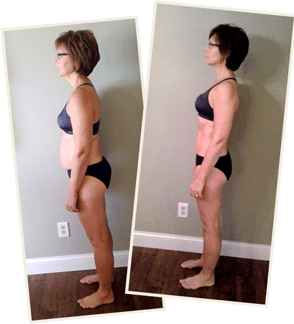
“At 52 years old I can
see the beginning of my abs”
“As a school teacher I don’t have time for the gym. However, I can do 15 minutes, 3 times a week. In the first 9-weeks I’ve already lost 16 lbs. and 20 inches."
Kimberly Scibak
St. Paul, MN

“Love the Way I’m Looking”
"Wow! I went from a size 34 with my gut hanging down to a size 31. I haven’t worn a 31 since my high school graduation in 1977. I love the way I look.”
Anthony Agee
Rosedale, MD
You’re A Busy Mom Juggling More Balls Than A Circus Performer!
Some of our most raving reviews for Metabolic Prime come from moms across the globe. I watched as my own mom tried to stay fit and active as she raised my brother and I… and wow, what respect I have for the most important job on earth!
Now, what if I told you that Metabolic Prime can make mothering so much easier? Here’s why: mothers need more energy than their kids! And we both know how much energy our youngsters have, right?
That’s what time-warping your metabolism back to it’s prime can give you: the unbridled energy needed to not only keep up with your kids… you’ll also have plenty left over for that precious “you time” you need so desperately. And, during the Transformation Challenge, you’ll get to meet hundreds of other moms just like you, to keep you encouraged and celebrate your victories.
 Before
Before After
After“Talk about Prime... My Tummy Never Looked Sexier...”
“Who thought losing 42 lbs. could be this fun? I LOVE these micro-bursts. When I started, I had ZERO energy and a lot of weight to lose. At 51, I went from a size 13 to a size 5. I can’t remember the last time I wore jeans this small! Jade’s program is fantastic.”
Kristin Poswilko
Parker, CO

“This Busy Mom Lost 66 lbs.”
“I’m consistently shrinking... So far I’ve lost a total of 66 lbs. and 43 inches around my entire body. I absolutely LOVE Jade. His programs WORK!”
Holly Campbell
Rosemount, MN
 Before
Before After
After“I did it! I lost 107 lbs.”
“It took me 9 months and a few rounds of Jade’s program, but 107.5 lbs. are gone. I have more energy, I have muscle, and I have more confidence. I LOVE this program!”
Susan Hoke
Warren, OH
You’re A Weekend Warrior, Ex-Athlete, Or True Fitness Junkie!
Several of my most successful Metabolic Prime customers classify themselves as “weekend warriors.” These are guys and gals who work hard during the week and play hard on the weekends. You demand more out of your body, and that’s why Metabolic Prime is essential to your lifestyle.
In just 15 minutes, 3 days per week, you’ll up your game, increase your drive, lap your friends on the court, or run circles around your peers...all while you get into the best athletic shape of your life!

“I have more endurance now
to do the things I love”
“What a gift this program is... After suffering from insomnia for years, I’m THRILLED to say I sleep better, I have energy to spare, my cravings disappeared and my mood has improved - I’m less grouchy. I am an active person and now I have so much more endurance to do the things I love such as hiking, skiing, paddle boarding and yoga - I absolutely love it. Thank you, Jade!!!”
Nicole Tuttle
Nibley, UT

“I went to a local gym for 3 years,
6 days a week and GAINED weight...”
“Before I started this program I was strenuously exercising 6 days per week and gaining weight. 15 minutes, 3x a week and I lost the 15 pounds I gained at the gym. I love it!!”
Bonnie Durham
Kennewick, WA
You’re Retired And Taking It Easy!
Retirement is often quickly followed by an early demise. That’s because you are telling your body, “Hey, it’s time to shut it down. That long, dark night is approaching!” Why do that, when you have DECADES of youthful living ahead of you?
Metabolic Prime was designed to fit perfectly into the lifestyle of those over the age of 65. It will help you ward off age-related disease states like Alzheimer’s23, dementia24, osteoporosis25, diabetes26, heart disease27, and more.
And did you know that over 65, your body’s number one health enemy is sugar? Even healthy carbohydrates can be “mistaken” by your body as agents of disease. Metabolic Prime can retrain your body to process the carbs you love, burning them for fuel, instead of storing them as fat!
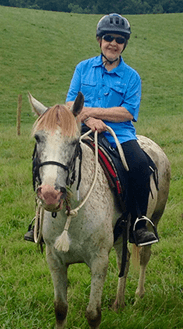
“My energy levels at age 76 are OMG!”
“This program made my upper body so strong. I’m on my 3rd
round, and I keep getting stronger and stronger. I can’t believe
how much energy I have! After just 15 minutes I feel upbeat, energetic and alive. All my 40-something friends say they want
to be me when they grow up.”
Brenda McNenny
Johnson City, TN
Let’s Be Honest… Are You A Couch Potato?
Many folks who are fit look down on “couch potatos”... but not me. I get it. You work hard, have a family, and you just need to chill out and reset your batteries. However, you and I both know that the couch potato lifestyle isn’t helping your body… so why not have both?
Remember: Metabolic Prime was created so you can start right on your couch if you have to. You can even do some of the metabolic sets while watching television! There’s no need to let life pass you by, or live it in a body that makes you cringe when you look in the mirror. Let’s get you into the shape you deserve, and restore your METABOLIC PRIME!
Here’s What You'll Receive Today
When You Register for the Prime Transformation Challenge...
Your Metabolic Prime 4-Phase Workout Videos:
(DVDs, Downloads or Both)
Smarter Is Better! And nothing is smarter than dialing you into your ideal body in just 15 minutes, 3 days per week! Get your metabolism automatically working FOR you by working smarter, not harder.
Enjoy these super-efficient “intelligent workouts” anywhere: in DVD, instant download for your smartphone, tablet or computer or all of the above…
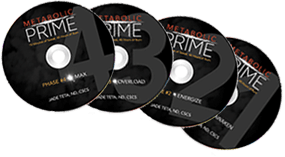
- Each phase is just a lightning fast 3 weeks!
- Each workout is just 15 minutes!
- Each move is just 45 seconds!
Your Body Transformation Tracker:
Why Guess When You Can Know! By using this clever Body Transformation Tracker, you will know and feel beyond any doubt…
- How fast your waistline is shrinking, and those bothersome “pockets” of fat are disappearing from your body!
- How your body’s metabolism is “time-warping” back to its prime, with better sleep, less pain, more energy, and better digestion!
- How your reborn metabolism is now shaving years off your appearance by going to work on your hair, nails, and even your skin!
Your Super-Simple Workout Calendar:
Each Checkmark Means You’re Progressing! You’ll always know exactly what to do next: which Phase, which workout, and the specific Primer Moves you need TODAY to move your body forward. You will…
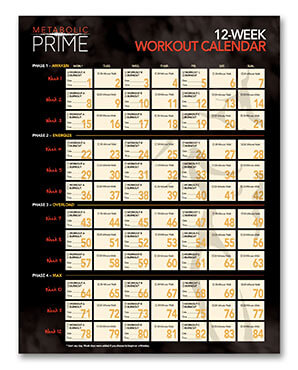
- Stay motivated as you watch your progress checkboxes pile up!
- Enjoy the feeling of staying right on track…almost as if I was right in your living room, motivating you all the way to your perfect body!
- Give your ego a boost every day by “quick-scanning” your momentum and the goals you’ve already achieved. “YES YOU CAN!” will become your mantra, and you’ll be amazed at how your renewed enthusiasm spreads to every area of your life!
Your “Rapid Results” Quick-start Guide:
In A Hurry? No Problem! I’ve created a 7-DAY QUICK START that guarantees you will drop at least a dress or pant size in less than a week! Think of this go-getters guide as…
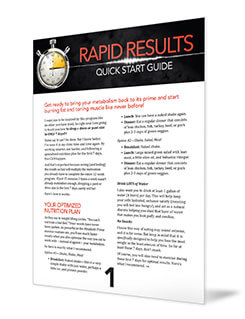
- Your “Cliff Notes” to stripping off at least a pant or dress size before this time next week!
- Your 5 minutes or LESS get going NOW blueprint…perfect if you’re as impatient as I
am! - Your “Do It…Guaranteed!” insurance
policy… who doesn’t have 5 MEASLY
MINUTES to get started torching away your
body fat and toning up your body?
PLUS:
Here are the Exclusive Bonuses You’ll Get ONLY as a Prime Transformation Challenge Participant...
As I mentioned earlier, you’re also going to get access to tons of extra goodies and bonuses that are designed specifically for this Challenge.
You’re going to get extra, exclusive tools that’ll help you maximize this special 12-week period... and get results above and beyond what you’d see just using Metabolic Prime on your own.
Exclusive Challenge Bonus #1:
How to Become Your Own Metabolic Detective Video Coaching Series
($450 value, FREE)...
Each week, we’re going to jump online for a 20 minute webinar, where I’m going to help you discover what works best for YOUR individual metabolism.
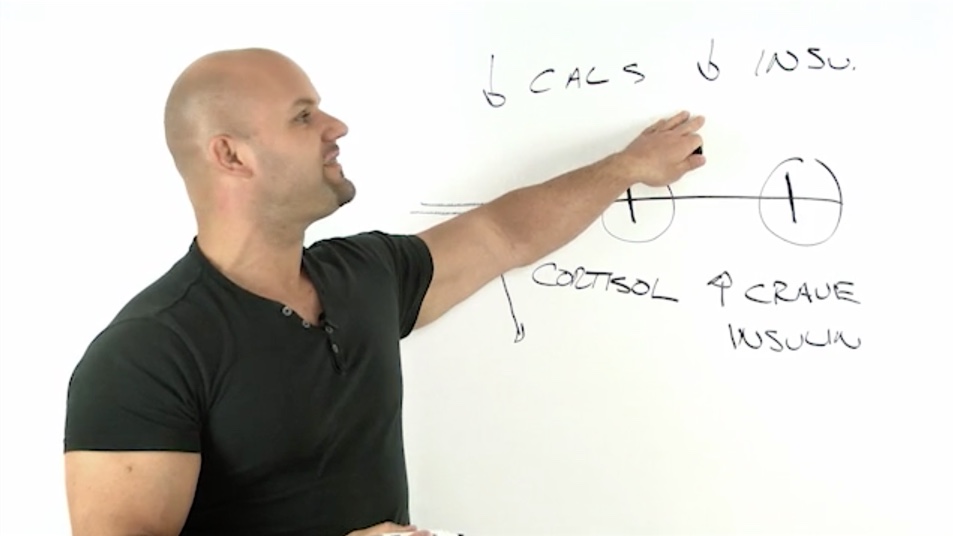
This will be information that will change your life forever.
You’ll learn to become a “metabolic detective” and make a “map” of YOUR metabolism — that’s customized to YOU — so you’ll always know exactly what to do to keep burning fat and sculpting lean muscle, for life.
You see, your body is constantly giving off metabolic “signals” that indicate what’s going on inside. Once you know what to listen for, you’ll hear them loud and clear — and know how to tweak what you’re doing accordingly.
You’ll know how to throttle back hunger and cravings, what to do to get the BEST sleep of your life, how to eat to ensure you have fully energized and productive days, or what to do if your mood suddenly swings to get back to even keel.
Here’s just a HINT of what we’re going to cover in these exclusive webinars...
- How to break free of the dieter’s mindset, commit to your transformation, and set yourself up for results you can see and feel...
- How to work with the 5 Laws of Metabolism — that allow you to do LESS, not more — in order to make your transformation stick...
- How to create an eating plan that works with YOUR tastes, makes you happy, and keeps you feeling full and satisfied while still burning fat every single day...
- How to transition from sugar-burner to fat-burner without binges, crashes or cravings...
- The missing mental and emotional elements beyond nutrition and exercise that most “diet plans” don’t cover, but are critical to ramping up your metabolic transformation...
- What to do after the Challenge is over in order to create a long-term healthy lifestyle that’s easy to stick to... and allows you to KEEP getting better and better results — for life!
Plus, we’re going to have time in each webinar for a live Q&A. I’ll be right there on the line, available to answer any questions you have generally, or even look at your specific obstacles and get you truckin’ again.
Now, don’t worry if you can’t make these sessions live. We’ll record each one so you can watch it whenever you have time... or even use the transcriptions or audio-only versions to read or listen to them whenever you like.
Just so you know, there’s nowhere else you can get this “metabolic detective” training — I’ve spent my professional career developing it and teaching it to regular folks and professionals alike.
This coaching series was developed specifically for this Challenge. The only thing close to it is another program I have called Feed the Lean, which is $150 per month for three months... or $500 per hour for one-on-one training.
And you’re getting this training series and one-on-one time with me completely FREE as a part of your Transformation Challenge registration today.
Exclusive Challenge Bonus #2:
My Secret, 100% Private Facebook Group...
You’re going to get access to our secret Challenge Facebook group, where you can get 24/7 LIVE community support.

There are hundreds of people just like you — some who’ve already been through the Challenge once — to support you, answer questions, celebrate your victories, help you over any obstacles, and encourage you to keep going.
You’re going to make a lot of friends in this group — and those friends are going to help you get a LOT of results.
Guess who else hangs out in our secret Facebook group?
Our team of professional nutritionists and metabolic experts — to whom you’ll have unlimited access. You can ask them ANY questions you have about what you’re personally experiencing at any time throughout the challenge.
Plus, I’ll jump on from time to time to answer questions, hang out, and give you big ol’ “LIKEs” on your results!
Folks who’ve already completed one Challenge said that while they loved the Prime workouts and the coaching calls with me, it was this group’s support that was just as important to their success.
One person even described this Facebook group as a “safe, non-judgmental haven of support.”
So if you EVER feel like you’re struggling or going to “fall off the wagon,” this is your first line of defense.
Exclusive Challenge Bonus #3:
The Weekly Metabolic Primer Motivational Emails...
Last but not least, you’re also going to get a weekly “pep talk” email from me.

That’s why these reminder emails are designed to keep you focused on your goals and motivated throughout the Challenge.
I’ll help you stay on track... blasting off fat... and give you extra bits of advice right when you need them!
And How About Letting Me Hand You
Over $91 In Metabolism-Priming Bonuses
Your 12-Week Metabolic Meals Plan (Value: $47, FREE!):
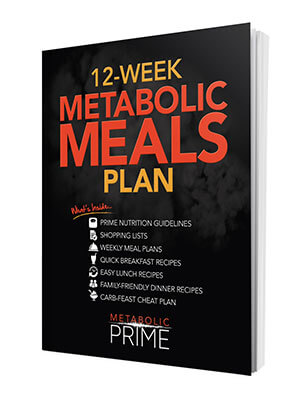
Want To Eat Your Way To Your Prime?
We’ve left no stone unturned for you… and that’s why I asked one of the top
lean-body gourmet chefs in the country to help me hand-prepare 12 WEEKS of metabolism-rejuvenating recipes for
YOU!
And yes, you get to eat CARBS!!!
Don’t let a bad diet de-rail your progress: You’ll always have this tasty recipe lifeline right by your side, ensuring you can quickly whip up tasty meals designed to revitalize your metabolism… plus, they’re so delicious, the whole family will love them!
Think of this as…

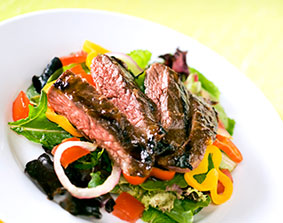

- Your 1-2 Prime-Time PUNCH! Once you combine the metabolism-rejuvenating workouts with these hunger-controlling, body-renewing meals, WATCH WHAT HAPPENS: Your body’s fat-burning hormones are TURNED UP as your fat-storing hormones are SHUT DOWN for max body-sculpting effects!
- Your heart-saving, brain-protecting, and stomach-easing BIBLE. You’ll be injecting detoxifying antioxidants, heart-healthy omega-3 fatty acids, gut-restoring friendly flora, and anti-inflammatory “youth nutrients” rapidly into your system…and you’ll watch in amazement at how youthful and energetic you’ll feel moments after every tasty meal!
- Your “cheat to win” carb-lovers guide! Hey, I love a good carb-rich treat just like you do… so I made sure to include these downright DECADENT carb-feast meals right into the plan. The best part? These actually signal your metabolism to burn fat even faster! You’ll never feel like you’re “dieting”… in fact, you’ll wonder if it’s even LEGAL to eat like this and still be losing weight!
Your Body-Sculpting Bonus Burnout Workouts
(Value: $27, FREE!):
How Hard Core Are You? You haven’t tasted what RADICAL feels like until you’ve put your body through my BONUS body-sculpting burnout workouts. These are not for beginners or the faint of heart… they are completely optional… yet if you’ve got the guts, plus just 5 extra minutes, you can…

- Dramatically accelerate your total body rejuvenation and body sculpting results that you can both see AND feel...
- Trigger a more intense metabolic “aftershock” that will flood your body with even MORE youth-restoring, fat-burning hormones… for a FULL 48 HOURS!
- “Burn off” any extra fatty acids the main workouts released into your bloodstream BEFORE your fat cells can suck them back in...
Plus Get This Fast Action Bonus!
Guaranteed Availability Only Until Today:
Friday, April 19th, 2024
The Truth About Belly Fat Loss
(Value: $17, FREE!)
Want the TRUTH about getting flat abs? I’m not only stripping away all the nonsensical “ab myths” you’ve been told… I’ll show you how to strip away as much belly fat as you want… right down to a rock-solid six pack for the guys, and a sexy trim tummy for the ladies! This is FOR YOU if…
- You’ve been led to believe that crunches and cardio is the best way to flatten your tummy. This is a lie…and the TRUTH will relieve you!
- You’ve always wanted a tummy you could be proud of… without “muffin tops”, “love handles”, or even “man-boobs!” Yes… the same tips you’ll discover in this tell-all bonus works for getting rid of that embarrassing “breast-like fat” around a man’s chest, and that outfit-destroying muffin top look that makes every woman cringe. Say “so long!” to these pesky fat patches FOREVER!
- You’ve labored for years, maybe even decades, slaving away at “traditional” exercise… trying in vain to get that lean, flat stomach you crave. You’ll discover why 98% of all exercise CREATES BELLY FAT and can make your waistline look BIGGER… and precisely what to do to get the midsection you’ve always wanted…
I can’t guarantee that this stomach-flattening bonus worth $17 will be free beyond today, April 19, 2024, so make sure I can add it to your order at no charge by taking advantage of the INSANE discounted price I just negotiated with my publisher.
In fact, they said...
“You’ve Got To Be Crazy”
My Publishers Thought I Lost My Marbles
When I Revealed the Special New Price For This Year’s Prime Transformation Challenge...
A simple bout with a calculator will reveal my publisher’s retail price for The Metabolic Prime System:
$239.00.
And that’s not even including our weekly
Transformation Challenge coaching calls,
motivational emails... which, at face value,
would make this whole program
20X more expensive.
You see... even if you COULD hire me privately to
teach you this program… and these days, you can’t…
it would cost you $400 PER HOUR at the very
least.
And to customize a meal plan like I have for you?
To customize each Phase to your specific level
of fitness? To get on the phone and walk you
through becoming a metabolic detective?
Forget about it… it would cost you
thousands of dollars.
I charge well over $1,000 to prescribe this
metabolism-rejuvenating system to my A-list
clients and celebrities.
Despite the fact Metabolic Prime is easily worth this much money,
I decided to do something… a bit nuts.
It started when I told them my plan: to discount the price of the
entire Metabolic Prime System all the way down... to just $97.
“You’re crazy, Dr. Teta!” they said.
“Nope… and guys…I’m JUST GETTING STARTED…”
When they saw I was serious, I hit them up with a plan to get the price down EVEN FURTHER:
I convinced them to pre-order 40,000 copies of Metabolic Prime, so we could negotiate a massive discount from our manufacturer.
That’s why I can offer you the remarkably low price you see below for the COMPLETE Metabolic Prime System PLUS the 12-week Transformation Challenge materials.
But there’s just one catch...
My Craziest-Ever “Challenge Special” Package is Going to Go FAST— I’m Sure We’ll Be Sold Out Well Before the January 2nd Deadline.
This is such an insane discount and such a comprehensive package, I’m certain we’re going to sell out ALL of the places available well before the January 2nd deadline.
In fact, I’m not even sure if we still have room. You’ll have to check below to see if there are any spots left...
And once they’re gone, they’re gone. You’ll have to wait until the next Challenge comes around... (and do you really want to do that?)
Check Below to See If There’s Still
Spots Available in the Challenge...

WAIT! Verifying if spots are still available…
Regular Price: $97

Congratulations, Your Spot is Still Available!
Today's Price: $97 $37
Discount Expires In 00:10
Oops, Sorry, the Coupon has Expired...
But you can still order at the regular price of $97 below.
Discount Expired!
Check the Box Below Next to Your Preferred Option
But hurry! This offer is going out to thousands of people, and spots in the Challenge are first come, first served. If you want in, get in now.
Remember: I need to hear from you by January 2nd so you’re guaranteed to have everything you need to get started on the Challenge on January 9th.
Kicking your transformation off on the right foot, with a bang, is critical to your success!
But again... I wouldn’t wait another day to register. Spots are going faster than ever because of the crazy low price I’ve set.
So if you see the “Congratulations, Your Spot is Still Available” above, decide quickly! I can only hold your place for a few minutes... after that, I have to open it up to someone else.
Your Spot is Reserved For Another...
The Metabolic Prime
Transformation Challenge
90-Day Guarantee:
If in the Next 90 Days You Don't Pass All 5 of These
Life Transformation Tests, I'll Send Your Money Back...
My father used to say, “A worker bee is worthy of their hire.” That’s the work ethic, intention, and dedication I put into every second of the Metabolic Prime workouts… every page of the Metabolic Prime manuals… and what I WILL give to YOU every time we meet for the next 12 weeks.
However, unless YOU think I’m “worthy of my hire”, I refuse to take a single penny out of your pocket.
So here’s my unreal 5-Way “Pass Every Test You Want” Guarantee:
- Metabolic Prime Will Nail “The 7-Day Energy Test!”
You will experience a surge in your natural energy levels… so much that you’ll wonder what to do with all your newfound zest to “get to it” and live life… and that will happen for you within 7 days from today, or I’ll refund your entire investment in Metabolic Prime ASAP. - Metabolic Prime Will Ace “The 14-Day Fat Loss Test!”
You will see far less fat on your body as your natural, attractive body shape starts to reveal itself in 14 days from today or again: I’ll refund your entire investment in Metabolic Prime ASAP. - Metabolic Prime Will Clobber “The 21-Day Body Sculpt Test!”
You will see soft, saggy muscles tighten and firm up, while you experience more power, easier movement and more balance and coordination. You’ll enjoy a more “sculpted” look that you desire in 21 days or less from now, or again: I’ll refund your entire investment in Metabolic Prime ASAP. - Metabolic Prime Will Blow Your Mind With “The Mood Test!”
You WILL be happier... it’s a simple as that. It’s one thing to look and feel your best. It’s another to be in the best mood of your life. Excited, present to all things both big and small. IN THE THICK OF LIVING BEAUTIFULLY! So if at ANY TIME during your experience with Metabolic Prime, you do not experience this lift in your mood...you guessed it: I’ll refund your entire investment in Metabolic Prime ASAP. - Metabolic Prime’s “Let The World Prove It TO YOU Test!”
You’ll receive a compliment every day once you hit the 35 day mark in Metabolic Prime… from strangers, friends, family members, loved ones… they can’t help but notice the changes in your body and your energy. So I’m willing to let OTHERS verify your results as well! And if they don’t? You got it… I’ll refund your entire investment in Metabolic Prime ASAP.
You literally cannot get any more fair than that. So let me take all the risk off your shoulders with this remarkable 5-test guarantee…
...just click the button below to secure your discount and free stomach-flattening bonus while they’re still available:

5 Little-Known Reasons Men And Women Everywhere
Are Flocking To Metabolic Prime...
The most obvious reason we have over 100,000 men and women, age 37-83, responding like crazy to Metabolic Prime is simple:
You burn fat, tone muscle and turn back the clock in just 15 minutes,
3 days per week
- Nothing is faster...
- Nothing else targets and builds body-rejuvenating MPAs...
- Nothing even comes close to Metabolic Prime...
However, we documented 5 ADDITIONAL reasons some of our most satisfied customers bought Metabolic Prime…
… and some of these were downright genius...
Genius Reason #1: “It increased my sexual drive and performance!”
This isn’t something we talk about a lot: we’ve had customers swear by it when it comes to increasing the quality and frequency of their love life.
I believe this is due to a natural increase in the sex-driving hormones in both men and women. The MPAs released by Metabolic Prime’s “micro-bursts” stimulate these hormones. Plus, the mere fact that you’ll look and feel better overall, I’m sure creates an additional “spark”!
Genius Reason #2: “It took years off my face and improved my skin!”
When you lose weight, you will look younger. Almost everyone has that experience. However, it’s another thing to see fewer lines, improved skin tone, and a more youthful glow.
MPAs signal skin cells to repair faster. Collagen, the protein required to keep your skin looking young, can increase. And that glow? That’s from the stimulation of your “fountain of youth” hormone, hGH!
Genius Reason #3: “It lets me sleep like a baby!”
Sleep is vital for your health. This is especially true if you’re over 40. Many disease states result simply from your body losing sleep. This occurs in most people as they age.
Metabolic Prime can induce deeper, more restful sleep. There are 3 reasons why. First, MPAs signal the brain to relax and rest more efficiently. Second, the increase in the youth hormone hGH is known to help with sleep. Third, your body will naturally sleep better to repair itself after the workouts.
Genius Reason #4: “It saves me a small fortune!”
You’ll save money on gym fees, personal trainer costs, equipment costs, and drive-time to and from your workout. That much is obvious. However, the hidden savings come because your natural appetite suppressing hormones are on full alert, so you naturally and easily eat less. Plus you will have more energy so you can get more done in a day. For you, that may mean more revenue you can earn, or even a pay raise!
Genius Reason #5: “It saved my joints!”
While 99% of the workouts out there stress your joints, Metabolic Prime was designed to help nourish them. You’ll feel more fluid. You’ll move about easier. You’ll roll out of bed in the morning without that fear of the first step. And your increased MPAs will signal your tendons and joint-supporting ligaments to strengthen!
Those are some pretty convincing reasons to give Metabolic Prime a risk-free trial today -- there’s literally nothing to lose except unwanted fat:
...just click the button below to secure your discount and free stomach-flattening bonus while they’re still available:

Here's What Other People Are
Saying About Metabolic Prime...

“This Really Worked for Me”
“I went to the gym 5 days a week so I had a hard time believing a 15-minute workout would do the trick... But it DID. When I was at the gym, I couldn’t lose the gut... But this program did it. My mid-section is shrinking and my clothes are loose. My energy is amazing. I used to go home and fall asleep. Now I’ve got energy all through the day and night. I’m sold. This really worked for me.”
John Elze
Forney, TX
“I’ve never been able to do this many push-ups... Amazing!”
Anissa Gaskin
Jackson, MI
“As a long time exerciser, I have done a LOT of programs, but I was having to workout longer and harder for the same results. Thankfully, with Jade’s program I am getting a lot more... without nagging injuries and joint & muscle pain.”
Deanne Mulvehill
Rapid City, SD
“I cannot believe the energy increase. I haven’t slept this well since before I had kids.”
Bond Ruggles
New Orleans, LA
“I have more time for life. I watch people waste so much time at the gym with poor results. Who doesn't have 15 minutes a day or just 45 minutes a week? You start and then it is over, it is the first work out that I have looked forward to doing EVER! And you can tell by just looking at me.”
Michelle Sweet
Lake Isabella, CA
“I have more energy and feel lighter on my feet, ready to go out and do things. Losing weight is great, but having more energy, sleeping better and waking up more rested and refreshed is amazing.”
Dean Springer
Richfield, MN
“This 15-minute workout is intense! It’s powerful, and I feel energized all day! My sleep is improved and my back pain has decreased. Thanks, Dr. Jade!!!”
Sunny Giesbrecht
Canada
“After the big snow storm
in New Jersey I shoveled 100 feet of sidewalk in the morning and again at night... and
it was a breeze and I
am 51 years old. Thank you!
I owe you my new life!”
Arnaldo Castillo
Paramus, NJ
“After the 1st week I lost 6 lbs. They are only 15 minutes, but these workouts kick your butt.
I’m already developing badass leg muscles, plus I FEEL BETTER. I love this program.”
Faith Mcrory
Alameda, CA
“At age 64, I look and feel younger than I have in years. I’ve even had people ask me if I’m my husband’s daughter, and he’s only 6 years older than me. I love that! I've lost 46 lbs and over 26 inches since July.”
Susie Dueringer
Gibson City, IL
“Lost my love handles which
I’ve had forever. Now I am very tight. AND... if you put a sack over my head, you would not know I am 65!”
Morris Rogers
Winchester, TN
“Toned arms, legs, belly and butt... I have so much more confidence in myself. Can't wait to wear a bikini on the beach and I'm 52 years old! It doesn't get any better than this! Only 15 minutes 3x a week.”
Lisa Dandegian
Yardley, PA
“My husband noticed the change in my body after just 2 weeks. I love this!
It’s quick and easy, and I’ve kicked my sugar habit with no cravings.”
Lisa Reid
Trenton, MO
“I work from 5 am to 10 pm most days due to having 2 businesses to run. I love the high intensity workout for 15 minutes. I also live on the road and I can do it anywhere!”
Joyce Pellegrini
Largo, FL
“I lost flab so easily and I didn't burn-out, crave sweets, or get a headache like I usually get after a gym class. Before Jade, I thought I was destined to continually gain weight and feel exhausted. Not anymore. Thanks, Dr. Jade!”
Nikki Stringer
Australia
“I love the energy and the
mental clarity I get after the workouts. It’s almost as good
as when I meditate.”
Katie Ryan
Pebble Beach, CA.
“I was having a hard time carrying my son and keeping up with him, but after this program my strength and energy has shot through the roof. Love this!!! This is a great workout. Having an 18-month old makes it hard to find the time to workout, but only 15 minutes 3x a week, makes it easy. Dr Jade is very motivating. I highly recommend it.”
Jennifer O’Brien
Canada
“15 lbs. gone, energy levels are OMG and no more afternoon naps... energy abounds. Easy, works... and tones you up. Love it.”
Bert Eickhoff
Nokomis, IL
“People that know me noticed a change within 3 short weeks. I am healthier, I look really fit, and I even quit my gym membership because Dr Jade gave me FAR better results. I look and feel better than I did in my thirties and I am 51. It’s a miracle.”
Janet Williams
South Euclid, OH
“The science is solid... it makes sense and it works. The proof is... I am leaner and stronger than ever.”
Deanne Mulvehill
Rapid City, SD
A Final Appeal To Your Common Sense...
Folks our age have it in spades:
Common sense.
My dad used to call it “horse sense”... I call it “street smarts.”
So here’s a question for your common sense to answer:
What will happen to your metabolism if you don’t make a move, commit to yourself, and join me and hundreds of other folks just like you for the Metabolic Prime Transformation Challenge?
Let me shoot straight with you:
- You will continue to age rapidly...
- Your health may be in crisis before you know it…
- The quality of your life will spiral downward...
- Your desire to get back in the game of your prime will wither away, along with your precious muscle, bone, and organ tissue...
And I desire SO much more for you than that, my friend. So much more!
So let me paint a different picture for you now:
It’s Monday, January 16th, 2017... one week after the Challenge begins.
Can you imagine that?
Great…
On January 16th, you’re looking in your bathroom mirror.
It’s the same old mirror, but it has a brand new reflection.
The “you” that’s looking back has a youthful new glow, and a smile that broadcasts optimism to the world.
This “you” is about to take the world by storm.
You now know that your metabolism has already started to come back to life...and you’re already showing the signs of getting back into your prime.
Jump ahead to February 6th, 2017... 3 weeks later.
Today you couldn’t stop it from coming: those compliments from your friends, coworkers, and loved ones. Everyone is in awe of what you’ve managed to accomplish over the past 30 days…
...and most important, you’re in awe of yourself:
- You stand with pride, beaming from your eyes like a lighthouse in the night.
- You know beyond an inkling of a doubt that you’ve done it: You’ve re-entered your metabolic prime of life.
- You’ve dropped the pounds you wanted to release and added a sexy new shape and tone to your muscle.
- You rest easier at night, knowing that you’ve just given yourself the best shot possible at a longer, healthier life…for yourself, your kids, your partner, and your lineage.
In the past 30 days, you’ve done far more than lose weight and tone up:
You’ve recreated yourself anew.
Down to the very cell, you are a new person: metabolically younger, energetically powerful, and mentally sharp as a master chef’s knife.
And it all started with the decision you’ll make today. The only smart decision that’s possible.
So click the button below, make the common sense choice any savvy person would make, and join me for the Metabolic Prime Transformation Challenge.
If you’re getting a physical copy of the program, I’ll send it out right away so you’ll have everything you need to get started—plus, you’ll have instant access to all the materials in your Members Area.
And, you’ll get a few follow-up emails from me with more details about the Challenge, your access to the secret Facebook group, and info you’ll need to get on the weekly webinars.
Remember, the deadline to sign up for the challenge is January 2nd to give you time to get all your materials... but please, don’t wait that long to decide.
Like I said, spots in the Challenge are going especially fast this year due to the crazy low price and extra bonuses — and once they’re gone, they’re gone.
Plus, your investment today is 100% protected by my 90 Day Guarantee. So go ahead and get registered now, while I have your spot on hold for the next few minutes.
I can’t wait to get this Challenge going! I look forward to talking with you on [DAY OF FIRST CALL]... and I’ll speak to you on the very next page!
Yours In Metabolic Youth,
Dr. Jade Teta
P.S.You may be wondering why there are limited spots in the Challenge.
Just so you know, this isn’t something I’m making up. In order to give everyone the one-on-one attention they deserve on our webinars and on the secret Facebook group, I just have to limit how many people can join.
If you’re still seeing the button, then that means there’s still spots available... but I can’t guarantee they’ll stay open until the January 2nd deadline... or even for the next few minutes.
Once spots run out or January 2nd rolls around, I’m shutting it down and you’ll have to wait until next time. (Sorry!)

A Special Personal Note for People With Children of Any Age...
I don’t feel as if I covered the entire story, so keep reading and bear with me, as this affects the health your loved ones...especially your children.
We pass personality traits down through our RNA. Think of RNA as the “front-runner” to DNA. While DNA is the blueprint to build “you”, RNA is the nitty-gritty of what defines you.
Unfortunately, we can pass our eating habits, addictions and other poor lifestyle choices down to our children. Perhaps you inherited some unlucky genes from your folks, as I did from mine.
I don’t blame them… they didn’t know, and neither did you. Yet that’s what we’re facing today…
… and I’d like you to consider rewriting history for your family’s sake.
While you cannot redo your child’s genetics, you can influence their daily decisions when it comes to how they move and what they choose to eat.
Our team here at Metabolic Prime has noticed that once our customers improve and rejuvenate their metabolisms, their children often take on healthier habits.
Customers report that their kids are getting better grades… paying attention in class more consistently… excelling at sports and hobbies… and experiencing feelings of enhanced self-esteem.
If for no other reason, I’d like you to try the Metabolic Prime Transformation Challenge on me for the next 90 days without any chance of losing a single penny…
… and I’d like to give this opportunity to you because I value your health, and the health of our future generations.
It’s up to us to help forge our soon-to-be leaders, entrepreneurs, parents, and caregivers.
Let’s make it a better future by creating a better you.
And let’s start right now!

Frequently Asked Questions About Metabolic Prime...
“Dr. Teta, how soon will I receive Metabolic Prime?”
When you order the digital downloadable version, you’ll receive a link to download it instantly. When you order the physical printed version that’s rush shipped to you, you’ll receive it within 5 - 8 days if you live in the US, or 5 - 11 days if you live outside the US.
Plus, when you order the physical printed version, you also get immediate access to the digital download version as yet another free bonus. That’s because I know how anxious my clients get at the thought of time-warping their metabolism back to their prime -- they simply can’t wait to get started!
“Dr. Teta, is Metabolic Prime safe?”
It’s the safest workout I’ve ever developed...by far. It’s joint-friendly, low impact, and helps stretch out the muscles that create the most tension in your body. That means you’ll feel more relaxed all day and night, and you’ll sleep like a baby.
What’s truly dangerous is doing nothing… we both know that. Just rest easy, as Metabolic Prime is your best choice when it comes to the safety of the workouts, and the health of your body.
“Dr. Teta, do I need to be in good shape to do the Metabolic Prime moves?”
No… in fact, you can start on your couch if need be. Plus, the variations and options for each move allow you to challenge yourself no matter what your fitness level is -- beginner, intermediate or advanced.
You should always have a chat with your doctor first just to make sure he agrees with your new fitness goals. Chances are fantastic that your doctor will love to see you taking your health more seriously!
“Dr. Teta, does Metabolic Prime require a gym membership or equipment?”
You can start your workouts with nothing more than the clothes on your back and your television or computer! That’s it. Once you’re ready, you can move up to using inexpensive in-home dumbbells or exercise bands… but only if you want. You can continue with just bodyweight for as long as you need.
A gym membership is NEVER required (although you can do Metabolic Prime workouts anywhere, including a gym if that’s what you desire.)
“Dr. Teta, my friend is doing Metabolic Prime, and she lost like 30 pounds in a little over a month. Is this common?”
While we do see some pretty wild weight loss results, I would not say that much weight loss so soon is common. In fact, I would encourage her to eat a bit more food. Your ideal weight loss target is about 2-3 pounds a week.
This of course will vary from one person to the next, but that’s a good general target. And keep in mind: adding lean muscle and bone density to your body will help burn off even more calories while you rest at night.
“Dr. Teta, how did you come up with Metabolic Prime?”
Some of my most demanding personal training clients are busy executives and have very limited time. I was forced to be creative… to come up with something that they would actually do, even when I wasn’t around. That was the key.
It’s one thing to have a personal trainer by your side. It’s another to be by yourself. So I needed a workout plan SO BABY SIMPLE AND FAST that my picky clients get superb results, even when traveling or during super-stressful times.
That was the birth of “The World’s Fastest Workout”... greed and speed!
“Dr. Teta, is there science to support MPAs?”
MPAs have some very compelling science behind them. And truth be told: it was actually Keoni, my “brainiac” older brother (who is also a doctor) who tipped me off to why we were seeing the “timewarp effect” in our client’s metabolic rate.
In fact, we actually co-authored an entire research paper that was published in the February, 2009 edition of the Townsend Letter -- one of the most respected medical publications around.28
At the end of this letter in the Scientific References section, you’ll find a fairly exhaustive list of peer-reviewed studies that we unearthed that validate the power of the metabolic molecules that the Metabolic Prime workouts help to release.
“Dr. Teta, is Metabolic Prime guaranteed to make me lose weight and tone up my body?”
Down to the PENNY! If you just so happen to be among the FEW who do not respond quickly enough to Metabolic Prime, and you’re impatient, then I’m happy to refund every penny. You have a full 90 days to see the effects for yourself, however, so by then you’ll need no further proof than your favorite mirror!
And if for any reason you’re not absolutely thrilled with the quality of the Metabolic Prime instructional videos, tutorials, manuals, and bonuses, simply email us at [email protected] and we’ll refund your entire investment today… no hassles, and zero hard feelings.
I am 100% committed to your health and happiness, so unless Metabolic Prime is absolutely rocking your world, I won’t ask you for a red cent. Fair?




